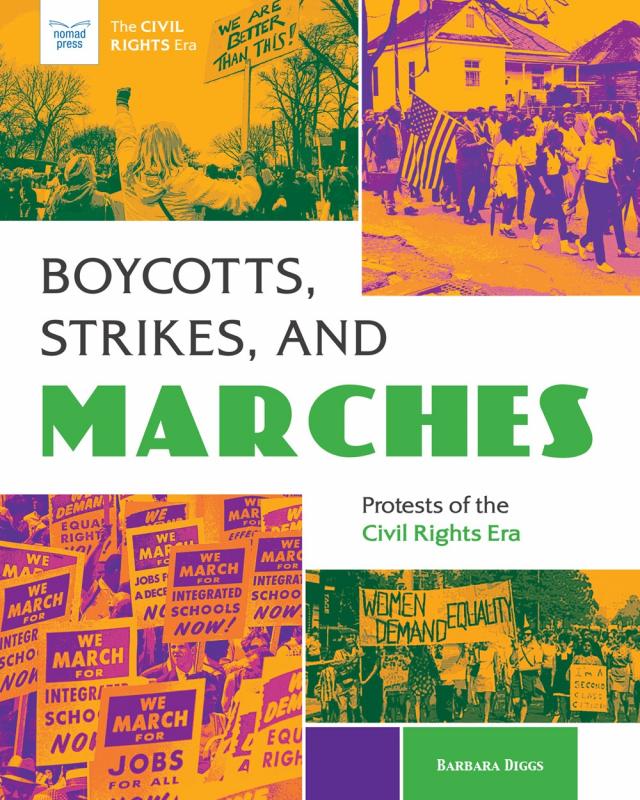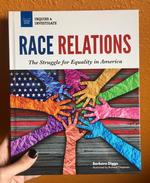
Boycotts, Strikes, and Marches : Protests of the Civil Rights Era
by Barbara Diggs Author
In Boycotts, Strikes, and Marches: Protests of the Civil Rights Era, readers 12 through 15 explore five ground-breaking protests that took place during the 1950s, ‘60s, and early ‘70s. Become immersed in the excitement, challenges, and spirit of the Montgomery Bus Boycott, the Draft Card Burning Protests of the Vietnam War, the Delano Grape Strike and Boycott, the first Gay Pride March, and the Women’s Strike for Equality. Hands-on projects and research activities alongside essential questions, links to online resources, and text-to-world connections promote a profound understanding of history and offer opportunities for social-emotional learning. Thousands of protests, marches, and demonstrations of the Civil Rights Era gave a strong voice to people and groups who were traditionally ignored. These protests led to important legal and social changes that continue to impact our nation today. In Boycotts, Strikes, and Marches: Protests of the Civil Rights Era, readers 12 through 15 explore five ground-breaking events that took place during the 1950s, 1960s, and early 1970s. Become immersed in the excitement, challenges, and spirit of the Montgomery Bus Boycott, the Draft Card Burning Protests of the Vietnam War, the Delano Grape Strike and Boycott, the first Gay Pride March, and the Women’s Strike for Equality. Kids learn about the conditions that prompted these demonstrations and how protest organizers used critical and creative thinking to surmount the challenges they faced to initiate meaningful change. When these protests began, American society looked vastly different than it does today. African Americans were denied the same rights as whites in many parts of the country. Women couldn’t pursue the same jobs as men. The LGBTQ community was forced to live in secrecy. Farm workers were forbidden to join unions to advocate for fair wages and working conditions. Protests were a tool the people used to express their discontent and start to make essential change in the fabric of both society and politics. And today, we’re seeing that the job is still unfinished, as protestors take to the streets and make their voices heard in a call for anti-racism through the Black Lives Matter movement.
You must log in to comment.

